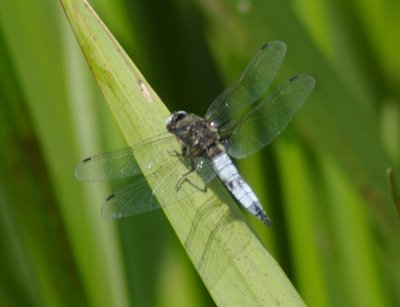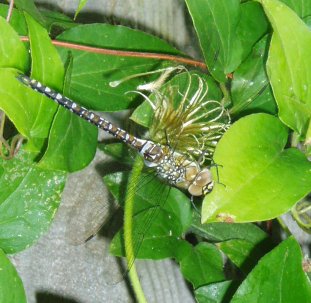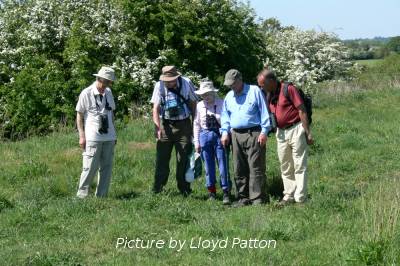|
|||||||||||||||||||||||||||||||||||||||||||||||||||||||||||||||||||||||||||||||||||||||||||||||||||||||||||||||||||||||||||||||||||||||||||||||||||||||||||||||||||||||||||||||||||||||||||||||||||||||||||||||||||||||||||||||||
Warwickshire Dragonfly Group - News page
Table of Earliest Dates for 2010 December 22nd
2010 Late "Late flying
dragonfly" November 23rd
2010 The end of the
2010 flight season August 19th 2010
Small Red-eyed Damselfly and Brown Hawker numbers
July 28th 2010
Small Red-eyed Damselfly and Migrant
Hawker flying June 27th
2010
New species for
Warwickshire (V.C.38) - Scarce Chaser May 29th
2010
More
species
now
flying May 24th
2010
The
late
flying
season
now
well
under way May 23rd
2010
Napton
Reservoir
and
Wolfhamcote
field
meeting May 14th
2010
Hairy
Dragonfly
emerging
and
flying
Common
Blue and Blue-tailed
damselflies May 5th 2010 First flying Banded Demoiselle of the year April 29th 2010 First Adult of 2010April 24th 2010
Larvae Identification Workshop, Brandon Marsh Table of late flying dragonflies Below are the latest records received for all species flying in the county this year. The only species for which there is a record late date is Small Red-eyed Damselfly. Not a year for notable late dates in Warwickshire. If you have any records for late flying or, indeed, any dragonflies or damselflies please send them them in.
Back to page top. Table of Earliest Dates Recorded The table shows the earliest dates adults have been observed this year in Warwickshire. It was updated on 19th August 2010.
If you have any earlier dates for 2010 or earlier times for previous years please let me have them. Back to page top. December 22nd 2010 - Late "Late flying dragonfly" Jim Timms sent a delayed record in for later flying Common Darters than Jon Bowley's. They were seen at Bubbenhall Meadow and Bubbenhall Wood on 13 November 2010. The table of Late Flying Dragonflies has been updated. The 2010 records that I have have received have been forwarded to Steve Prentice, the BDS Dragonflies in Focus Officer, who is responsible for all U.K. records. In the new year they will be incorporated into the NBN Gateway data. All our records for the year will contribute to the 2013 National Dragonfly Atlas. Many thanks to all who sent in records for 2010. If you have further records that you have not sent me yet please do so. Back to page top. November 23rd 2010 - The end of the 2010 flight season The flight season has come to a close fairly early with the cold weather. The Table of late flying dragonflies for 2010 shows that the only species recorded at its latest in 2010, by six days, is the Small Red-eyed Damselfly. Last year we had the latest ever record for Common Darter. The highlight of the year was the first county record for Scarce Chaser, see the news item for June 27th 2010. We must hope that an unseen female laid eggs too. Will we see the first truly Warwickshire Scarce Chaser in 2012 (or next year if we have been visited in earlier years)? Most recorders have sent in their 2010 records and they are in the Warwickshire database. All the distribution maps in the county atlas have been updated using these data. Jon Bowley made a particularly interesting observation: 60+ Scarce Blue-tailed Damselflies on 8th August in a newly worked area of their breeding site. He conjectures that they were part of a mass emergence because none were seen on subsequent visits. The late date suggest that it was a second generation emergence. The latest standing of the species counts in each of county's 10km. squares is shown on the map on the BSD National Atlas 2013 page. We have, of course, gained one new county species in the year and added 96 post 2007 "species 10km. sq." records. A number of squares, particularly on the county boundary, still have low or very low species counts. We have two more recording years to try and fill in the gaps. If you have any records for 2010, or any previous years particularly after 2000, that have not been submitted please email or post them to Peter Reeve at the address below. Please use the new email address and, of course, bookmark the new website URL. Back to page top. August 19th 2010 - Small Red-eyed Damselfly and Brown Hawker numbers The Small Red-eyed Damselfly has been seen at only four sites so far this year. Also, at these sites the number of individuals seem fewer than last year, itself a poor year compared to 2005, 6 &7, and it has not been found at any new location. Also it appears to be absent from sites where it was recorded in previous years. For example at the Swift Valley Reserve, Rugby where it was first recorded in the county in August 2004. The high season for the species continues to the end of August and, hopefully, more will be seen. In contrast Brown Hawker seems to be about in large numbers and quite widely across the county. Though, as the distribution map shows, this year's records are clustered in a few parts of the county. It is suspected this reflects areas where recorders are more active. For both these species and, indeed, all species more records from across the county would be welcome. The map on the the BDS National Atlas page shows the state of the county species counts in each 10km. square. It shows that progress has been made this year but there are still gaps around the county waiting to be filled - particularly on the county boundary. Peter Reeve was on the Mark Powlett Show on Coventry and Warwickshire Radio, Tuesday 17th August spreading the word about Warwickshire's dragonflies. Back to page top. July 28th 2010 - Small Red-eyed Damselfly and Migrant Hawker flying Graham Robson was the first to report Small Red-eyed Damselfly at his pond in Marton on 11 July. It has been seen since then at a few sites in small numbers. We are now at approaching the height of their flight season and can expect to see it at more sites.
Back to page top. June 27th 2010 - First County Record, Scarce Chaser  An email,
dated 26.6.2010, from Richard Lamb arrived this morning with the
following news: An email,
dated 26.6.2010, from Richard Lamb arrived this morning with the
following news:I've
seen
Libellula
fulva
on
the
Avon
at Marlcliff. There were at least
three males yesterday 25.6.10 at grid SP 093507.
Richards's picture shows one of the individuals. The marks on the abdomen show it has mated though not necessarily at Marlcliff. Kay and Peter Reeve visited the site on Sunday 27th June and after a bit of searching found two, possibly three, males. Again, two males had clearly mated (the different marks on the abdomen confirmed they were different individuals). The possible third male strayed into the territory of a male "on station" and the two shot off high into the air in a whirling flight. If you get the opportunity, visit the Marlcliff site in the next few days and report what you see. Sightings of females and breeding activity would be particularly exciting. The "hot spot" appeared to be towards the Bidford-on-Avon end of the field accessed from the riverside parking at Marlcliff. Back to page top. May 29th 2010 The first flights table is now getting full. Richard Harbird saw Emerald Damselfly at Morton Bagot 23rd May, this is quite an early appearance compared with many species this year. Black-tailed Skimmer was found flying at Bubbenhall by Jim and Carol Timms 27th May and on the next day, not far away, Dick Burroughs reported an Emperor Dragonfly. Kay and Peter Reeve visited Wormlieghton Reservoir on 28th May to do their first monitoring transect of 2010. Following the very large draw down of the reservoir by British Waterways last autumn there was concern that the newly establishing Hairy Dragonfly population may have been affected. It was very pleasing to see three or more males patrolling up and down the marginal reed beds looking for females. There were also very good numbers of Red-eyed Damselfly, some showing breeding behaviour, this species seems to be unaffected by the cold winter and spring if a little late in emerging. What a pity the Hairys were not showing for our Napton Reservoir field meeting. So far no reports of Hairy Dragonfly at Napton or at Alvecote Pools have been received. If you get the opportunity to visit either of these sites or Wormleighton in the next two or three weeks please keep a lookout for them and send in reports. Back to page top. May 24th 2010 Most of the early species are now flying but generally one to two weeks behind the previous earliest date, see the first flights table. A surprising exception is our rarest county species, the Scarce Blue-tailed Damselfly. Jonathan Bowley found it 23rd May and says he had: Excellent views of five males and one female, the latter in the orange aurantiaca colour phase having only just emerged. A number of damselfly larvae crawling around in the puddles, which were very shallow and silty but contain some waterweeds, were possibly this species. For our other rare species, Club-tailed Dragonfly, a single female was seen on its maiden flight from the Avon riverside at Marlcliff and an exuvia found at Welford-on Avon by Kay & Peter Reeve on 22nd May. It was probably the start of the emergence of this species. Other first flights reported were: Azure Damselfly by Steve Stroud on 16th May at Stockton quarry; Beautiful Demoiselle by Phill Clayton on 16th May at Stretton-on-Fosse; Broad-bodied Chaser by Jonathan Bowley on 16th May at Salford Priors; Four-spotted Chaser by Steve Stroud at Stockton Quarry on 16th May; Red-eyed Damselfly by John Harris on the Birmingham Fazeley canal near Middleton on 13th May; and White-legged Damselfly by Peter Reeve at Marton on 21st May. May 16th was busy! Corrections and additions to first flights table and previous reports: Jonathan Bowley was incorrectly credited with spotting the first Common Blue Damselfly. Unless someone pre-dates it, Kay & Peter Reeve now have the credit! Steve Stroud had a Large Red Damselfly emerge from his garden pond at Hall Green on the same date Jim & Carol Timms saw theirs at Bubbenhall. Back to page top. May 23rd Napton Reservoir and Wolfhamcote field meeting Eleven of us met at the British Waterways' Napton Reservoir at the beginning of what was to be the hottest day of the year so far. After a severe winter and cold spring our hopes were raised that the damselfly and dragonfly populations would appreciate the weather and show themselves. The small pool beside the car park gave us a start with a mature male Red-eyed Damselfly sitting on a Amphibious Bistort leaf. It and Large Red Damselflies were in breeding mode. Azure, Common Blue and Blue-tailed Damselflies were evident and emerging in good numbers. The opportunity was taken to collect a few exuvia and hone our larvae ID skills using Steve Cham's excellent guide. The spotting on the heads of the Azure Damselflies was very clear through the magnifying glass. It was when we walked up onto the bank of the main reservoir that the sheer magnitude of the emergence event became clear. As we walked through the grass clouds of newly emerged damselflies rose up around us, Red-eyed, Azure, Common Blue and Blue-tailed. In spite of the hot conditions and the knowledge that Hairy Dragonfly had been flying a few miles away, see May 14th news item, we saw no sign of them. The only dragonflies present were four Four-spotted Chasers one of which was perched on a fishing rod, "the quad. on a rod" as someone commented.
Back to page top. May 14th 2010 Jonathan Bowley reported the first sightings of flying Blue-tailed Damselfly at Napton Reservoir on 7th May. A visit to the Avon at Marlcliff on 9th May by Kay and Peter Reeve to look for Club-tailed Dragonfly was not productive. No Club-tails and only one teneral Large Red Damselfly was seen. As the first flights table shows, last year the first record was 2nd May. A visit by Kay and Peter to Stockton Reservoir on 12 May was more productive. Seven exuvia of and an emerging Hairy Dragonfly were found. They were all females. Was this chance or is it something in their biology? There is now a fairly good sprinkling of Large Red Damselfly across the county but the cold weather and, may be, the harsh winter we have had seems to be slowing down the emergence of adults. Back to page top. May 5th 2010 Max & Christine Maughan found the first adult Banded Demoiselle at the
RSPB Middelton Lakes reserve 1 May. It is a good early date for this
cold spring. As the first
flights table shows there was an earlier record in 1950 (!) and
there is a record for 2007 on the same date. There are a number of further records for Large
Red Damselfly . Keep the records coming in. The first report of a flying odonate was received today. Jim Timms
recorded a Large
Red Damselfly at Bubbenhall. As the first
flights table shows it is quite late just managing to creep into
April. Larvae Identification Workshop, Brandon Marsh - 24 April 2010 This becoming an annual fixture and always well attended. Numbers,
as usual, are limited due to limited material and equipment and also
the amount of attention that attendees need and expect. The indoor session comprised a short slide presentation showing the
key features needed to identify larvae and exuvia. There was then an
hour and half session working with exuvia. Each group of three had the
use of a copy of Steve Cham's invaluable dragonfly and damselfly larvae
ID books. A big advance on previous years. For details on Steve's books
see: http://www.dragonflysoc.org.uk/shop.html. In the afternoon
we went out on to Brandon Marsh and found and identified larvae of
Large
Red Damselfly, Red-eyed Damselfly, Azure Damselfly, Common Blue-tailed
Damselfly. The expect Southern Hawker larva was not found, unlike in
PJR's pond where one was found the previous day. We found many other
aquatic invertebrates, a particularly nice Water Scorpion, and
Amphibia. Thanks are due to Caroline Bailey for her great help and Warwickshire
Wildlife Trust for providing the facilities. Please send any item for inclusion on the news page to: Peter Reeve, Co-ordinator WDG
|
 The picture of the
The picture of the  At lunch we
moved to our second site, the upper Leam at Wolfhamcote.
The river is small here and has a thriving population of
Beautiful Demoiselle. On a visit three days earlier there was no sign
of
them flying but we soon saw our first immature male and in a wooded
area beside the river many immature males and females were feeding and
sunning themselves. Down a half mile stretch of the river more
individuals were present. Two or three newly emerged White-legged
Damselflies were also found on the river as were Large Reds and Azures.
At lunch we
moved to our second site, the upper Leam at Wolfhamcote.
The river is small here and has a thriving population of
Beautiful Demoiselle. On a visit three days earlier there was no sign
of
them flying but we soon saw our first immature male and in a wooded
area beside the river many immature males and females were feeding and
sunning themselves. Down a half mile stretch of the river more
individuals were present. Two or three newly emerged White-legged
Damselflies were also found on the river as were Large Reds and Azures.